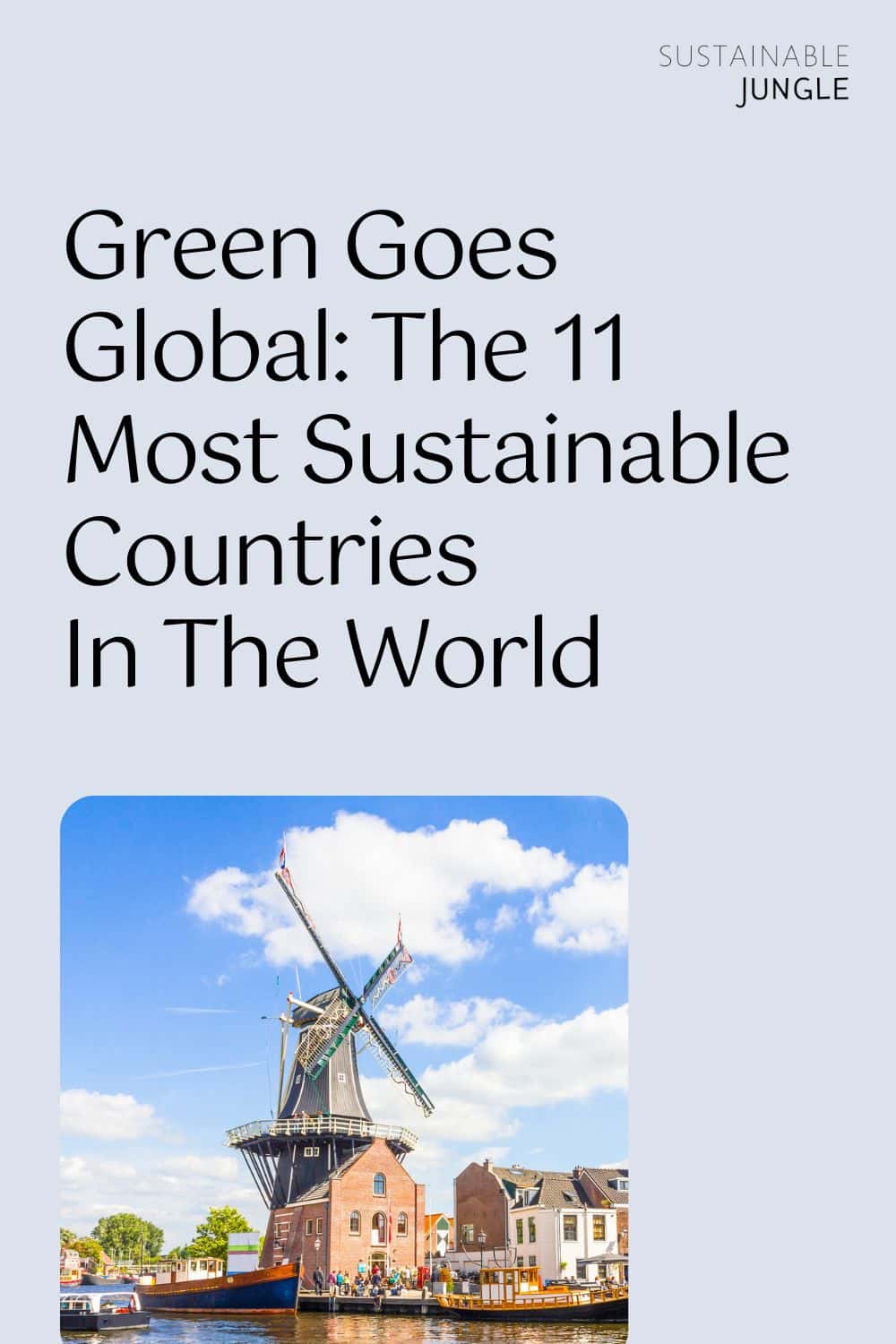
Green Goes Global: The 11 Most Sustainable Countries In The World
Global warming is well… a global issue.
Climate change is expected to affect every country, but its impact will be felt differently everywhere.
Ironically, the biggest polluters will be the ones that will feel the effects the least (at least initially.)
Under the Kyoto Protocol and the Paris Agreement, many countries have signed legally binding treaties to reduce greenhouse gas emissions (120 and 196, respectively.)
Yet, not every country has done its best for a greener future. That said, which countries are the most environmentally friendly?
While there’s no definitive answer, here are some of the most sustainable countries in the world that are doing their best to tackle global sustainability issues.
What Does A Green Country Look Like?
Which country is currently the most sustainable and why?
The answer is subjective, though there are some top countries that always make the ranks.
However, the greenest countries ranked highly in many of the following areas:
- Energy: Annual energy consumption, renewable energy usage like solar power, smart-energy initiatives, low carbon emissions, etc.
- Transportation: Electric buses and EV’s, commuting incentives, efficient public transport, biking rates, etc.
- Policy & Environmental Law: Plastic bag bans, carbon tax, clean energy incentives, sustainable development goals, plans to imrpove air quality, resitriction and penalization for usage of fossil fuels, etc.
- Green Living: Personal environmental values, conscious consumerism, community engagement, food banks, local sustainable gardens, eco-friendly landscaping to increase biodiversity, etc.
Yale’s Environmental Performance Index helped us quantify these values, though we took more than just the EPI score into consideration.
Unsurprisingly, when it comes to which countries are most sustainable, European countries top the charts, but they’re not the only ones we considered.
In order to diversify our list, we chose to focus on other countries in the world working on reducing greenhouse gas emissions and waste.
The Greenest Countries In The World
1. Denmark

The Locals
What continent has the most highly sustainable countries?
That would be Europe, and not only is Denmark one of the most sustainable countries in Europe, but one of the most sustainable on our entire global list—and it’s largely thanks to the people and their culture.
With a history based on agriculture and fishing, Danish culture inspires a close connection with the natural environment.
Meaning, urban farming and farm-to-fork eating is the norm in the sustainable country.
As is cycling, with 70% of the population over the age of 6 owning bikes (that number rises to 90% in the capital city, Copenhagen).
Recycling systems in the eco-friendly country are also efficient, with a national recycling rate of 74%!
Environmental and Legal Policies
Which country is leading the way in sustainability?
Well, Denmark ranks #1 on Yale’s Environmental Performance Index.
The Danish Energy Agreement focuses on energy efficiency measures in various sectors, including industry, transportation, and buildings.
Electric vehicles (EVs) are supported by incentives such as tax breaks and reduced registration fees, and building regulations in Denmark include requirements for energy efficiency and sustainable construction practices.
Denmark also has a Circular Economy Strategy that includes goals for reducing waste and promoting sustainable consumption and production.
Pollution & Greenhouse Gas Emissions
A pioneer in wind power, Denmark generates half of its energy from wind turbines, mainly from offshore wind farms.
The European country plans to be carbon neutral by 2050, with their capital city committed to being the first carbon-neutral capital in the world by 2025.
Their Climate Act includes support for renewable energy projects, and incentives for businesses and individuals to adopt sustainable practices.
Carbon pricing is used to encourage big businesses to reduce their carbon emissions.
2. Sweden
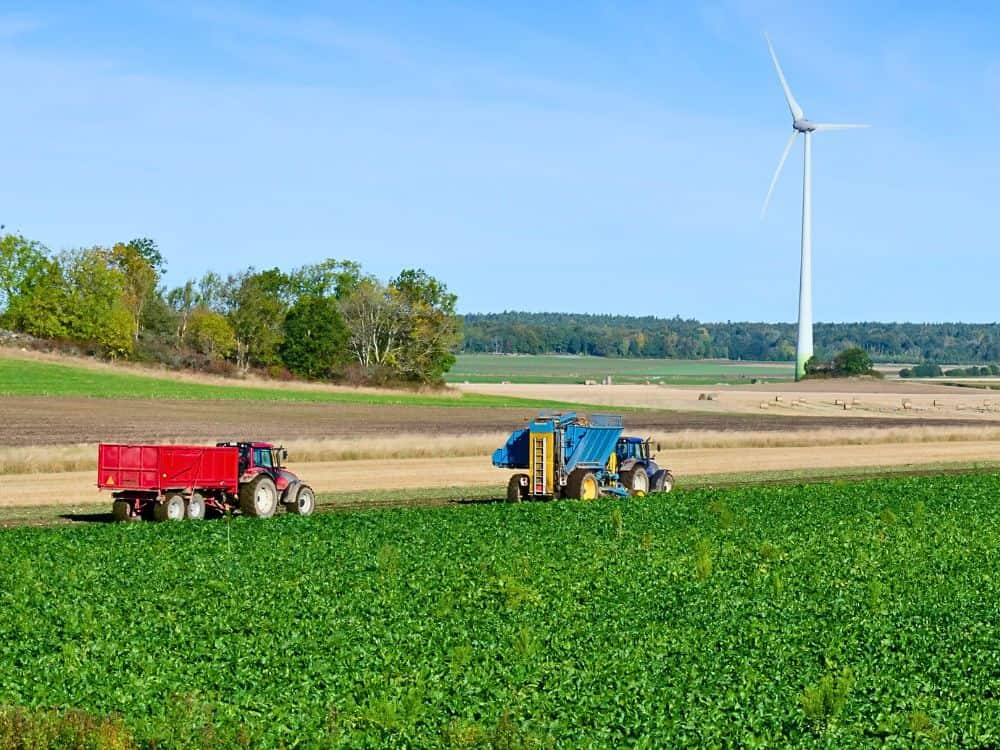
The Locals
Mamma Mia! This nordic birthplace of the iconic ABBA knows the planet is sending out some serious “SOS” signals.
That’s why, deemed the “green innovation generation”, many young people in Sweden have made a huge push for sustainable consumerism—especially in response to some not-so eco-friendly brands that have come from Sweden, like fast fashion pillar H&M.
Surveys show one in five Swedes under the age of 30 identify as either vegan or vegetarian (we’re personally thanking them for the plant-based Ikea meatballs).
Plus, 72% of Swedish consumers confirm that sustainability influences their purchasing decisions, which probably explains the Swedish boom in second hand stores seen over the past years.
Greta Thunburg would be so proud!
Environmental and Legal Policies
The Swedish Environmental Code covers a variety of issues including air and water quality, noise pollution, air pollution, waste management, nature conservation, and chemical usage.
A main component of the policy includes the “polluters pay” principle, in which those responsible for environmental damage are held financially responsible for remediation.
In line with EU’S Single-Use Plastic Derivative, Sweden has also implemented various plastic provisions into their legislation, namely a plastic bag tax. Which, weirdly enough, is being redacted because it has actually increased resource consumption.
Pollution & Greenhouse Gas Emissions
Often argued to be THE most environmentally friendly country in the world, Sweden has invested heavily in sustainable energy resources, specifically hydropower, wind power, and biomass.
The country has a carbon tax on fossil fuels and numerous waste management strategies, including the adoption of waste-to-energy facilities.
The green country has adopted The Climate Act, which states the government will create a plan every fourth year to describe how climate targets will be achieved (with the goal of zero net GHG emissions by 2045.)
3. Switzerland

The Locals
With crystal-clear lakes and sprawling mountainous terrains, it’s no surprise that Swiss culture places huge emphasis on nature and the environment.
Recycling rates in the sustainable country are some of the highest found in the world, with up to a 50% success rate. We’ve actually visited and seen first-hand their intensive recycling and sorting systems and how seriously the locals take them, and we were beyond impressed.
Many homes are equipped with water saving technology, and individuals practice water conservation on the daily to preserve environmental health.
Since most Swiss cities are designed to be pedestrian and cyclist friendly, many locals choose cycling and walking (and swimming!?) as their main form of transportation, giving them a considerable edge among countries with the greenest transportation.
Switzerland’s biggest challenges are unsustainable consumption patterns and biodiversity loss.
Environmental and Legal Policies
Switzerland is the first country to integrate a green economy into its legislature, meaning they will focus on resource efficiency and building a circular economy.
With over 50,000 species residing in their lush landscapes, the country has passed numerous legislation preserving biodiversity and natural areas.
One being the spatial planning act, which calls for urban planning where cities grow up, rather than out.
The Green Economy Plan, Environmental Protection Act, and Swiss Biodiversity Strategy, lead the country’s climate policy.
Pollution & Greenhouse Gas Emissions
In terms of renewable energy sources, Switzerland is one of the most eco-friendly countries.
Their economy is increasingly reliant on decarbonated forms of electricity, mainly hydropower and nuclear energy.
In fact, 682 hydroelectric power stations around the country produce about two thirds of the country’s total electricity.
Their goal is to reduce emissions to net zero by 2050.
4. Austria

The Locals
Adding yet another to the list of the greenest countries in Europe, Austrians proximity to nature and traditional ways of living have instilled a strong sense of environmental protection into their culture.
One of the most sustainable countries for organic farming, over 26% of their total agricultural area is under organic management.
Almost all Austrian households purchase these organic foods, at least occasionally.
And, when they do take that trip to the market, they use a bike or public transportation.
Topping that off with a recycling rate of 63%, we’d say the locals in Austria are doing great with their sustainability efforts.
Environmental & Legal Policy
Austria effectively uses economic instruments and voluntary approaches to incentivize sustainable practices.
Their farm policy favors small-scale and sustainable agriculture, with policies that limit subsidies for large farms.
Waste recycling and energy recovery is incentivized via taxes, including an energy consumption tax on electricity and natural gasses.
Federal funds also support investments in facilities for wastewater treatment and energy conservation.
Pollution & Greenhouse Gas Emissions
Despite having reduced GHG emissions at a slower pace than EU average since 2005, Austria has still set ambitious goals to achieve climate neutrality by 2040.
In addition to carbon pricing, their government has implemented electric vehicle incentives and Climate and Energy Funds to reach these goals.
Perhaps the singular most effective measure is the introduction of the annual “climate ticket” that allows ticket holders to use all forms of public transport in the country, incentivizing public over private transport.
5. Japan
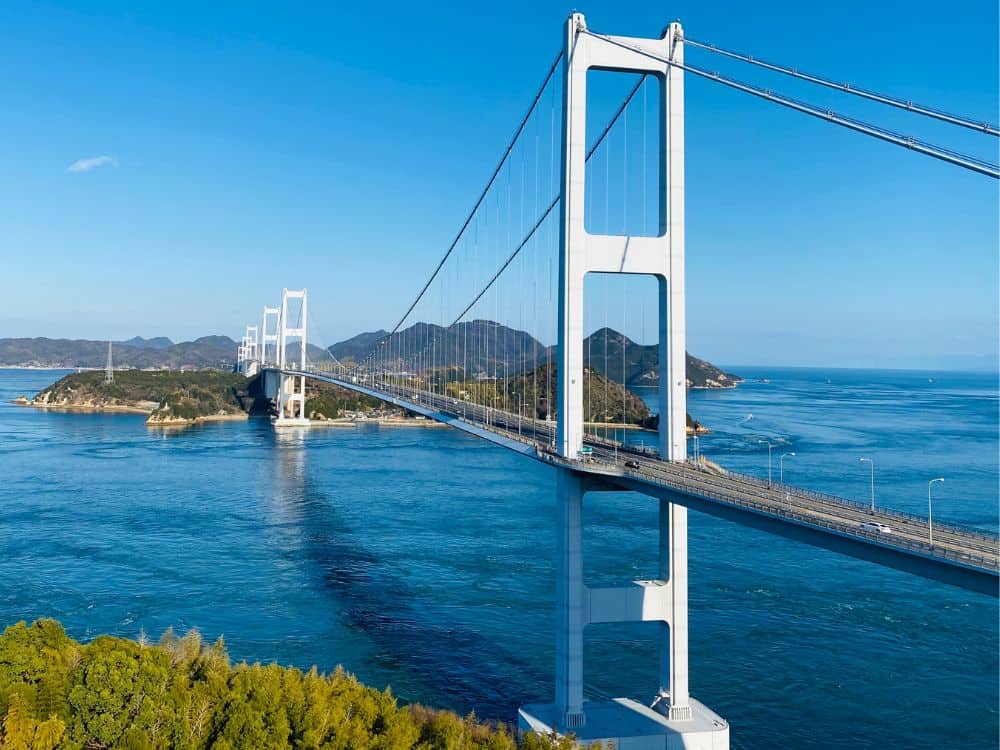
The Locals
So what is the most sustainable country outside of Europe?
Japanese people have a strong cultural appreciation for natural spaces and often engage in activities that connect them to their environment.
With an extensive network of reliable public transportation, most locals use trains and buses for their daily commutes.
Walking their bustling streets, it’s rare to find a single piece of litter on the floor.
The locals are serious about keeping the streets clean, and they are also rigorous with recycling (20% recycling rate).
The island nation notably incinerates its trash, therefore their waste management systems are separated into three categories: burnable, non-burnable, and recyclable.
Environmental & Legal Policy
Japan ranks 21st on the environmental performance index, falling right behind the Netherlands.
While not as sustainable as many European countries, it’s still an impressive achievement given the staggering 13.5 million people that live in Tokyo alone (the most populated city in the world) and the fact that Asia otherwise boasts some of the least sustainable countries in the world due to the increasing population and rapid urbanization.
We chose to include Japan due to its commitment to creating a more sustainable future, despite its massive population, relatively small landmass, and physical separation from other countries that in general can make sustainability more difficult.
Which include implementing Extended Producer Responsibility (EPR) programs, organic farming initiatives, and marine protected areas.
Pollution & Greenhouse Gas Emissions
Japan is the second biggest producer of single-use plastic waste.
There is ongoing research to find alternatives to single-use plastics, and many places have implemented a plastic-bag fee.
Japan used to be a global leader in terms of effective anti-pollution policy and energy conservation, but has found challenges in adjusting to the post triple 3/11 disaster.
Nuclear power remains a huge component of their energy mix, though they are providing incentives for investments in renewable energy sources.
They have committed to a net-zero emissions target by 2050.
6. Norway
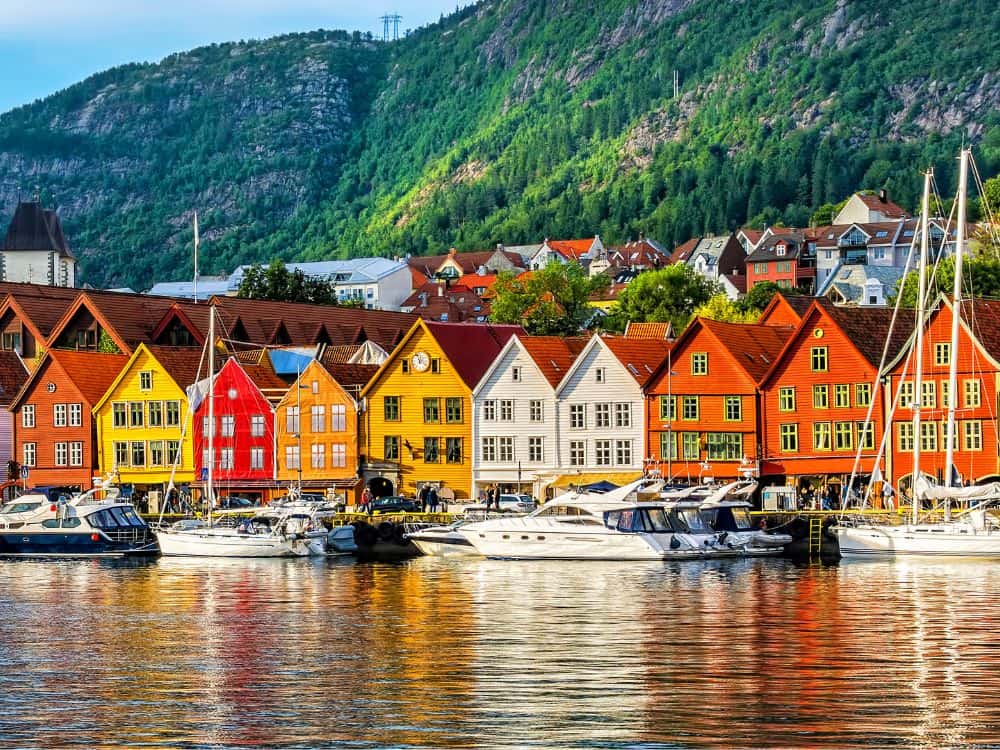
The Locals
There’s no(r)way Norway would be able to achieve their sustainable goals without the help of the locals!
Norwegians have a deep appreciation for nature, and outdoor activities are an integral part of their lifestyle.
Perhaps the most sustainable country in terms of embracing electric vehicles, EVs now account for over 79% of new vehicle purchases in 2022.
To be fair, however, we recognize that oftentimes, sustainable products are more expensive and EVs are perhaps the height of this truth.
With the average price of electric cars sitting at USD $53,469, it’s no wonder that one of the wealthiest countries (ranking #4 in GDP per capita) in the world tops EV ownership percentages.
Norway has a well-organized waste management system that encourages waste separation, recycling, and composting. Recycling rates land between 38.2% and 42.8%.
Environmental & Legal Policy
The government is committed to meeting international agreements, such as the Paris Agreement, and has implemented policies to transition towards a low-carbon economy.
Areas of prioritization include clean energy, sustainable food systems and resulting food security, protected areas for forests and oceans.
Following the “all in this together” mindset, their strategy assists developing countries in improving their capacity for disaster risk reduction, and ending poverty and food hunger.
Pollution & Greenhouse Gas Emissions:
Norway is a global leader in hydropower, which works especially well in their rainy climate.
Currently, 98% of their electricity production is courtesy of renewable energy sources.
The country is well on its way to its goal of being carbon neutral by 2030 (approximately 20 years sooner than other sustainable countries).
7. Canada

The Locals
With big polluters like America, not many will look to North America to find the most environmentally sustainable countries, but this next (often literally) green country is out to shatter expectations.
Canada o’ Canada—where pines and maples grow, and locals do their part to protect them.
Or, try to at least.
Given access to recycling, 97% of all Canadian households make use of at least one recycling program. Yet, only 9% of waste is actually recycled, suggesting that recycling systems need improvement.
As does public transport, which the government is well aware of, with a $14.9 billion investment into improving the public transit system.
Currently, around 82.6% of Canadians commute to work as a car driver or passenger.
Environmental & Legal Policy
Their climate plan, A healthy Environment and a healthy economy, targets five pillars of sustainable action: household energy waste, clean transportation, pollution pricing, clean industrial advantage, and resilient communities.
It also contains measures to support Indigenous climate leadership and a strong Canadian contribution to worldwide climate action.
The government has set a plan to protect 30% of the country’s natural spaces by 2030 and is currently working on a zero plastic waste plan.
Pollution & Greenhouse Gas Emissions
Like other environmentally friendly countries in the world, Canada has made the pledge for net zero emissions by 2050.
With the second highest renewable energy usage in hydropower (59.3%), the country has already made significant progress towards this goal.
Their green transition policy is led by carbon pricing, investment incentives, and public procurement of green technology.
8. New Zealand

The Locals
Which is the greenest country in the world?
In the 2021 Environmental Performance Index, New Zealand is ranked 19th out of 180 countries (Environmental Performance Index 2021).
The small country has an estimated recycling rate of 28%.
Perhaps in line with a recent study that shows Kiwis (81%) are more concerned about the impact of climate change than citizens of any other nation.
Though, they have pushback towards reducing consumption of animal products.
Environmental & Legal Policy
One of the top producers of ethical wool, New Zealand has some wooly good policies to keep sheep (and other living things) happy and healthy for years to come.
Namely, with international agreements.
The green country has various bilateral free trade agreements, and multiple other multilateral agreements that focus on sustainability.
Their most recent agreement includes enforceable climate commitments with the European Union.
Pollution & Greenhouse Gas Emissions
The small country has made huge progress with renewable energy.
Around 40% of its total primary energy supply comes from renewable sources, mainly hydro, geothermal, and wind power.
The government has passed a climate-change act that targets a reduction of (non-biogenic) greenhouse-gas emissions to zero by 2050, while reducing biogenic methane emissions nearly by half by the same year.
9. Finland
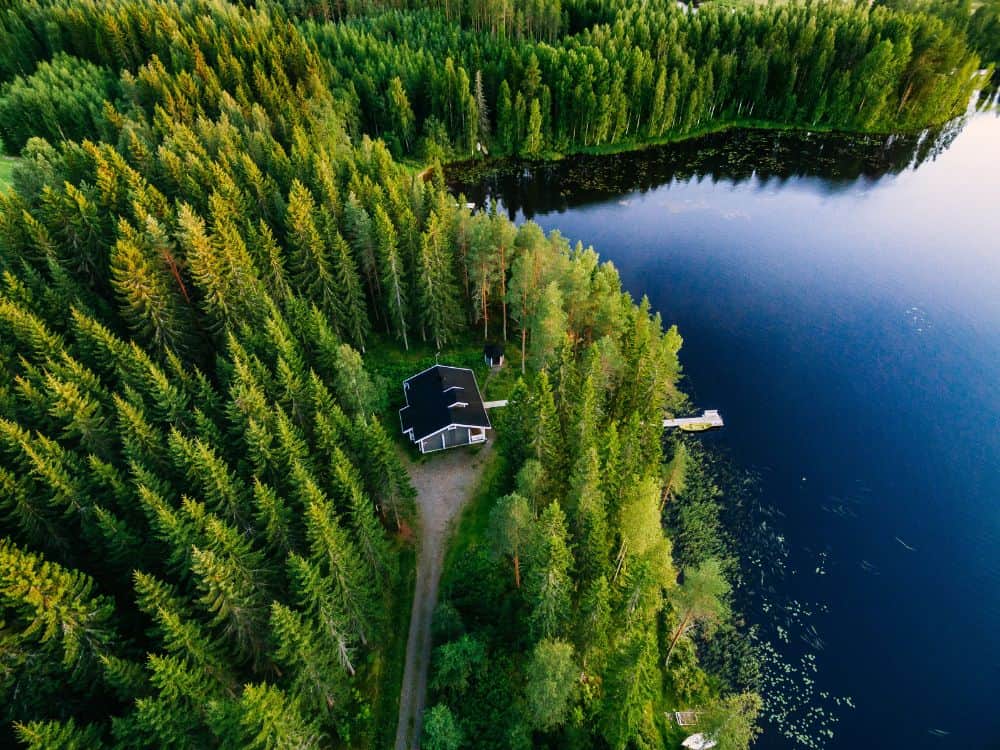
Locals
No greenest countries ranking would be finnished without the Finnish!
With vast green forests and glistening blue lakes, you’ll often find the locals enjoying outdoor activities.
A strong tradition of forest management naturally means that plenty of locals are involved in forestry activities that preserve biodiversity and encourage responsible wood harvesting.
The country boasts an impressive 41.6% recycling rate, and many locals practice conscious consumerism by opting for sustainable products.
Despite the rise of fast fashion, sustainable fabrics and materials are clearly considered in Finnish buying patterns.
Environmental & Legal Policy
With a strong record of cooperation on conservation issues, Finland is ranked 3rd on Yale’s EPI report.
Their highly effective environmental legislation focuses on curbing industrial emissions, protecting valuable forests, and cleaning polluted waterways—in addition to UV-powered urban water treatment systems giving Finnish citizens some of the cleanest water in the world.
Agriculture and forestry remain the biggest challenge to their sustainable development goals.
Pollution & Greenhouse Gas Emissions
Finland’s ambitious Climate Act aims for carbon neutrality by 2035 (15 years sooner than other countries in the world.)
The plan includes a target for the land use sector regarding stronger carbon sinks.
Currently, 41.8% of the country’s energy is drawn from renewable resources.
10. Netherlands

Locals
Known for its infamous cycling culture, the Netherlands is among the countries with the greenest transport.
Their sustainable cities are compact, and equipped with efficient transport networks and copious green spaces.
The sustainability values of Dutch consumers have encouraged businesses to innovate new, green technology.
And, recycling rates stand at a noteworthy 56.8%!
Environmental & Legal Policy
The biggest environmental preservation concerns include air quality and agricultural pollution, which have strong international dimensions given the geography of the environmentally friendly country.
Environmental policies focus on problems of climate change, acidification, eutrophication, dispersion of toxic substances, disposal of waste, disturbance, water depletion, squandering of resources and nature protection.
Pollution & Greenhouse Gas Emissions
The Netherlands aims to reach carbon neutrality in the electricity sector by 2050.
Their plan implements carbon levies for the industry and power sectors, energy and car tax reforms, and air passenger taxes
Currently only 11% of total energy comes from renewable sources, namely biomass.
11. Costa Rica

The Locals
Following the Pura Vida lifestyle, Ticos place high value on their country’s biodiversity and ecosystem vitality.
Costa Rica locals actively engage in conservation efforts, supporting initiatives including reforestation projects, clean energy campaigns, and public education awareness.
Ticos also practice water-saving practices at home and in businesses, including rainwater harvesting and installing water efficient technology.
The population faces significant struggles with recycling, with an overall rate of only 9%. Similar to Canada, this is mainly due to lack of sufficient recycling systems.
Environmental & Legal Policy
Like Asia and North America, Central America typically isn’t touted for its sustainability—so what country is the most eco-friendly from this string of tropical locations?
Unlike its nearby neighbors, Costa Rica has over 30 laws related to environmental sustainability and biodiversity protection, including some outstanding plastic laws.
By law, supermarkets and other industries are not allowed to sell or distribute plastic bags or straws. Single use bottle distributors must establish a program for recycling their products.
Guidelines that are just as impressive as their moratorium on oil exploration and exploitation, which will remain in place until 2050, at the earliest.
Pollution & Greenhouse Gas Emissions
Costa Rica’s achievements in renewable energy have gained international recognition.
Around 99% of electrical energy for the small nation comes from renewable energy sources, mostly hydroelectric and geothermal sources.
Their climate policy is one of the only that allows locals to produce their own renewable energy and sell their surplus production.
If the country were to implement all the policies outlined in their National Decarbonization Plan, they will be well on their way to carbon neutrality by 2050.
Did you know we Have a Newsletter?
We cover the latest in sustainable living, fashion, zero waste, beauty, travel, finance and more…
Final Thoughts On The Most Environmentally Friendly Countries
So what is the most eco-friendly country in the world and why does it matter?
Well, we can’t say definitively which ONE is best, but we can say that environmental health is directly correlated to the health of humanity.
Unfortunately, given the huge impact from the least environmentally friendly countries, it’s not looking good for either.
Humans are currently using 73% more natural resources than the Earth produces in a year. And the population is only getting bigger and bigger.
Fortunately, we don’t need to be living in one of these green countries to fight for a better future; you can reduce your carbon footprint at home with small and simple changes.
Now that you know what the greenest countries in the world are, it’s time to uncover the greenest cities in the world.
But before you go, share this article with your favorite sustainable travel lover so they can add these most sustainable countries to their bucket list.
Pin these:

